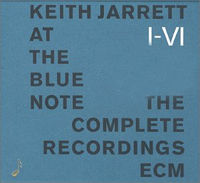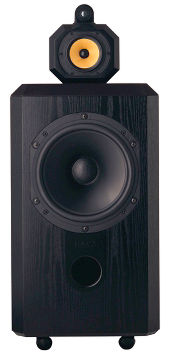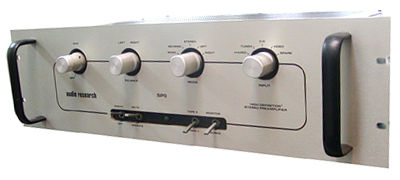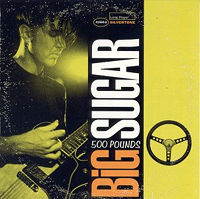LATEST ADDITIONS
Versa Dynamics 2.0 LP player
There is something vaguely disturbing about the idea of an $8000 turntable and arm combination. That's more money than a lot of audiophiles have invested in records through the years. Total overkill! Or so it might seem. But the entire history of analog disc reproduction, from the first LP to the present, has been one of seemingly open-ended discoveries—of subtleties nobody ever imagined were frozen in those tiny grooves, of levels of quality no one ever guessed the medium was capable of. Yes, newer LPs are a lot better than the first ones, but that is only to be expected in any technologically advancing field. What is amazing about the LP is that, 40 years after its introduction, we are still finding out that all of them, from the first to the latest, are better than anyone could have imagined. An improved phono unit doesn't just make the latest release from Wilson Audio or Reference Recordings sound better, it does the same for <I>every</I> LP you own!
Audio Research M300 monoblock power amplifier
<B>JGH opens</B>
Recording of December 1995: Keith Jarrett at the Blue Note
<B>KEITH JARRETT: <I>At the Blue Note: The Complete Recordings</I></B><BR> Keith Jarrett, piano; Gary Peacock, bass; Jack DeJohnette, drums<BR> ECM 1575-80 (78118-21575-2, 6 CDs only). Manfred Eicher, prod.; Jan Erik Kongshaug, eng. DDD. TT: 7:03:37
There's No Business Like the Hi-Fi Business
You're a typical audiophile. You read this magazine and others like it cover to cover, month after month, keeping up with industry trends and insider gossip. You've ingratiated yourself with every hi-fi dealer in your area, all of whom will let you take equipment home for extended auditions, give you generous trade-in allowances, and sell to you at a small percentage above their cost. <I>Never pay retail</I>, you chuckle to yourself, checking the newspaper's classifieds for audio bargains.
B&W Matrix 801 Series 2 loudspeaker
Since the introduction of the original B&W 801 monitor loudspeaker in 1980, it has been adopted as a reference by several recording studios around the world, Over the past five years, I have seen 801s present in just about every recording session with which I have been artistically involved. While the original 801 monitor had its strong points, I was never satisfied with the detached and muddy-sounding bass, discontinuous driver balance, and low sensitivity. Unless this speaker was driven by an enormous solid-state power amplifier, with an elevated high-frequency response, the tubby and slow bass response often obliterated any detail in the two bottom octaves of musical material.
Balanced Audio Technology VK-5 preamplifier & VK-60/75 power amplifiers
How important is the use of balanced circuit typology in the design of preamplifiers and power amplifiers? Ask the top audio designers (I didn't, but just play along, okay?) and you'll get a wide variety of opinions. Some reject the balanced approach outright, arguing that it represents a needless duplication of circuit components, and that better results can be achieved if the same attention and resources are devoted to perfecting a single-ended circuit. In his provocatively titled article "<A HREF="http://www.stereophile.com//features/335/">Balance: Benefit or Bluff?</A>" (<I>Stereophile</I>, November 1994, p.77), Martin Colloms questioned the advantages of balanced designs, suggesting that while the results may be better in certain respects (<I>eg</I>, noise level), the reproduced sound may suffer in other, perhaps more important ways (<I>eg</I>, rhythm and dynamics).
BATmen: Victor Khomenko & Steve Bednarski
Victor Khomenko, the "VK" of Balanced Audio Technology's VK-5 preamp and VK-60 amplifier, was born in St. Petersburg (then Leningrad), and grew up two blocks from the Svetlana tube factory. He attended the prestigious Leningrad Polytechnic Institute and received an M.S. in physics and electronics, specializing in electronic emissions. He spent his early working life in the Russian electronics industry, then emigrated to the US in 1979—with $400, a family, no home, and no job.
Audio Research SP9 preamplifier
Following the introduction of their very expensive, tube/FET hybrid SP11 preamplifier, there were rumors that Audio Research was working on a hybrid tube/transistor preamplifier targeted to cost less than $2000. The rumors were confirmed when ARC showed a black-and-white photo of the SP9 at the 1987 Winter CES. Obviously, like all magazines, we were impatient to receive a review sample, but the first review of the SP9 actually appeared in the summer '87 issue of Peter Moncrieff's <I>IAR Hotline</I>. Peter's review was almost intemperately enthusiastic, comparing the SP9 positively with early samples of the SP11 and suggesting that its sound quality was considerably better than would be expected from its $1695 asking price. Naturally, we were anticipating good things when our review sample arrived in Santa Fe in late July.
Recordings of November 1995: 500 Pounds & Ride Like Hell
<B>BIG SUGAR: <I>500 Pounds</I></B><BR> Silvertone 42160-2 (CD). Geordie Johnson, prod.; Peter Prilesnik, prod., eng. TT: 47:42<BR> <B>BIG SUGAR: <I>Ride Like Hell</I> EP</B><BR> Silvertone 42287-2 (CD). Geordie Johnson, Peter Prilesnik, Dan Gallagher, prods.; Alfie Annabelini, T. Murray, M. Peters, engs. TT: 20:50




